Aluminum
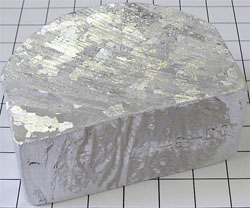
Pure aluminium (Al) — lightweight silver metal (melting point=660 °C, boiling point=2467 °C) light weight (1 m3 weighs 2700 kg, almost 2.5 times lighter than iron), white, highly plastic, treated well (better than iron), soft (easily deformed by hand) and quite durable.
Aluminium pass excellent heat and electrical current. As well as copper, when in contact with hot surfaces aluminium heats up quickly and gives off heat quickly. Therefore, in order to quickly cool hot tea pour it into the aluminum Cup.
Because of its high ductility and softness pure aluminium is almost never used, and usually use alloys with carbon, copper, manganese, tin, zinc, titanium. Used alloys are called duraluminum (duralumin — 94% Al, 4% Cu, 0.5% Mg, 0.5% Mn, 0.5% Fe and 0.5% Si). Almost all aluminum items are stored at your home - aluminum alloys. They are quite resistant to corrosion because of the rapid oxidation in air to form a thin film, durable and low activity alumina Al2O3. So cold concentrated nitric sulfuric acid does not react with aluminium.
By itself, the aluminum is very active. Dilute nitric acid and aluminum react readily with the formation of aluminum nitrate Al(NO3)3 and the release of nitric oxide NO.
Diluted sulfuric acid and aluminum react with rapid evolution of hydrogen (react most metals with dilute sulfuric or hydrochloric acid).
Aluminium dissolves in alkaline solutions with the formation of aluminates, for example, in caustic soda with the formation of sodium aluminate Na[Al(OH)4] and hydrogen.
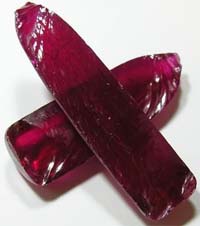
Known mineral, composed of aluminum, is corundum Al2O3 (crimson and blood-red). Aluminum oxide also called alumina.
Not less well-known mineral turquoise (blue or apple-green) is composed of aluminum (Al), copper (Cu) and phosphorus (P). The color of the mineral, however, due to the presence of copper ion. In addition to aluminium common elements in minerals are silicon Si (quartz, carnelian, chalcedony, agate), sodium Na, magnesium Mg, potassium K, sulphur and sometimes phosphorus. For example, the chemical composition of jade (the mineral is white or green color) expressed with the formula Ca2(Mg, Fe)5(OH)2(Si4O11)2.
Pure aluminium in the form of powder with heating is flammable with formation of its oxide (the same property has the same lightweight and durable material titanium, but it is much more difficult to process mechanically).
Tin
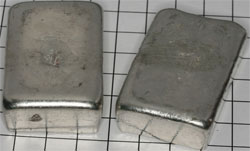
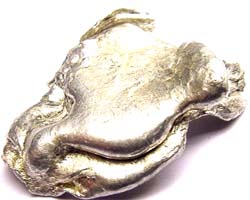
Pure tin (Sn) is a silvery white metal, soft and very ductile, malleable. The melting point of pure tin (232 °C), so the tin relates to low-melting metals. Cast of tin wand bends with a distinctive crunch caused by the rubbing together of individual crystals (try it yourself, you can use tin, which is used for soldering). Interestingly, less than 13.2 °C sustained another modification - the grey tin, which has the structure of a diamond.
The transition of white tin into gray tin starts already at a temperature of 13.2 0 C and at low temperature occurs spontaneously, although holding it in the laboratory is required to enter the small seed of grey tin. This transition is called tin plague: tin crumbles to a gray powder and loses its metallic properties. However, the alloying of tin with other metals the process of transformation is slower. Embrittlement of tin - "Tin plague" caused death in 1912 the English expedition led by Robert Scott aimed to the South pole: kerosene travelers kept in vessels, soldered tin.
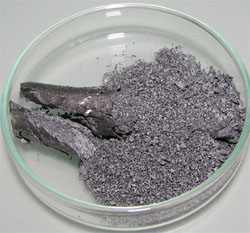
The reverse transition from the grey tin white tin is much faster - just place gray tin in hot water for a minute.
Tin reacts with dilute acids with formation of salts of tin. Wood's alloy, consisting of a lead (25%), tin (12,5%), cadmium (12.5%) and bismuth (50%), melts in hot water at 69 °C.